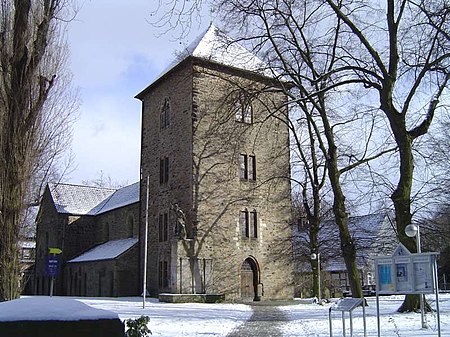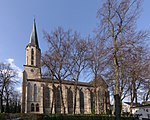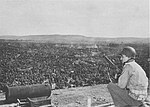St. Georg, Aplerbeck
8th-century churches in GermanyProtestant churches in DortmundRomanesque architecture in Germany

St. Georg is a church and Protestant parish in Aplerbeck, now part of Dortmund, North Rhine-Westphalia, Germany. It is a Romanesque cross basilica (Kreuzbasilika) from the 12th century. The only building in Dortmund of its kind, it is a listed monument.In the 19th century when the town grew due to industrialisation, a larger church was built, and St. Georg fell into disrepair. It served as a community hall from 1926, and was restored as a church from 1963. It is again the parish church, while the larger church has been mostly used for concerts since 1999.
Excerpt from the Wikipedia article St. Georg, Aplerbeck (License: CC BY-SA 3.0, Authors, Images).St. Georg, Aplerbeck
Ruinenstraße, Dortmund Aplerbeck (Aplerbeck)
Geographical coordinates (GPS) Address Website External links Nearby Places Show on map
Geographical coordinates (GPS)
| Latitude | Longitude |
|---|---|
| N 51.493611111111 ° | E 7.5616666666667 ° |
Address
Georgskirche
Ruinenstraße 37
44287 Dortmund, Aplerbeck (Aplerbeck)
North Rhine-Westphalia, Germany
Open on Google Maps









